
Table of Contents
What is Root Chakra?
The Root Chakra, also known as Muladhara in Sanskrit, is the first of the seven main chakras in the human body according to Hindu and yogic traditions. It is located at the base of the spine, near the coccyx or tailbone. The Root Chakra is associated with the element of Earth and is linked to our sense of stability, security, and survival instincts.
Root chakra characteristics
Certainly! The Root Chakra, also known as Muladhara, is associated with the sense of grounding, stability, and basic survival instincts. Here are some characteristic attributes of the Root Chakra presented in a table format:
| Aspect | Description |
|---|---|
| Name | Muladhara (Root) Chakra |
| Location | Base of the spine |
| Color | Red |
| Element | Earth |
| Associated Gland | Adrenal glands |
| Function | Grounding, stability, security, basic survival |
| Symbol | Four-petaled lotus flower with a square in the center |
| Mantra | “LAM” |
| Physical Connection | Legs, feet, bones, adrenal glands |
| Emotional Connection | Security, stability, trust |
| Balanced Energy | Feeling grounded, secure, stable |
| Imbalanced Energy | Anxiety, fear, instability |
| Yoga Poses | Tadasana (Mountain Pose), Malasana (Garland Pose) |
| Crystals | Red Jasper, Hematite, Smoky Quartz |
| Affirmation | “I am grounded and secure.” |
It’s important to note that maintaining balance in all chakras is essential for overall well-being. The Root Chakra serves as the foundation for the energy system, and imbalances can affect other aspects of one’s life. Balancing practices such as meditation, yoga, and mindfulness can help align and harmonize the Root Chakra.
Significance of element ,color and beej mantra
The Root Chakra, or Muladhara, is associated with several key elements, including its elemental association, color, and beej mantra (seed sound), each of which holds significance in understanding and balancing this energy center:
- Element: The Root Chakra is primarily associated with the element of Earth. This elemental association signifies stability, solidity, and grounding. Earth is the foundational element from which all life emerges, providing a sense of rootedness and security. Balancing the Root Chakra involves connecting with the stable and grounding qualities of the Earth element, fostering feelings of safety and security.
- Color: The color most commonly associated with the Root Chakra is red. Red symbolizes vitality, strength, and energy. It is the color of the physical body, representing life force, survival instincts, and primal energy. Visualizing or surrounding oneself with the color red can help activate and balance the Root Chakra, promoting a sense of stability, security, and groundedness.
- Beej Mantra: The beej mantra associated with the Root Chakra is “LAM.” Beej mantras are single syllable sounds that are believed to encapsulate the essence of the chakra and its qualities. Chanting or meditating on the “LAM” mantra can help stimulate and balance the Root Chakra’s energy. The vibrational frequency of the mantra resonates with the energy center, promoting a sense of grounding, stability, and connection to the Earth element.
In summary, understanding the significance of the Root Chakra’s element (Earth), color (red), and beej mantra (“LAM”) provides insights into its qualities and how to effectively balance and activate this energy center. By working with these aspects through practices such as meditation, visualization, and chanting, individuals can foster a deeper sense of stability, security, and rootedness in their lives.
Symbol of Root Chakra
The symbol of the Root Chakra, known as the Muladhara, is a vital aspect of its representation and understanding within various spiritual practices, particularly in Hinduism and yoga. The symbol typically consists of several key elements that convey the essence and significance of this energy center:

- Lotus Flower: The lotus flower is a common motif in chakra symbolism and represents purity, enlightenment, and spiritual growth. In the Root Chakra symbol, the lotus typically has four petals, each representing aspects of the chakra’s qualities or energies. The lotus emerging from the muddy depths of the earth symbolizes the journey from darkness to light, from ignorance to awakening.
- Square: The Root Chakra symbol often includes a square or box-like shape at its center. The square represents the Earth element and signifies stability, grounding, and the physical realm. It serves as a foundation upon which the rest of the chakra system is built.
- Downward-pointing Triangle: Positioned within the square, the downward-pointing triangle is another common element in the Root Chakra symbol. The triangle represents the energy of manifestation, strength, and the downward flow of energy towards the Earth. It signifies the connection between the spiritual and physical realms and the grounding of divine energy into earthly existence.
- Color: While not always explicitly depicted in the symbol, the color red is closely associated with the Root Chakra. It symbolizes vitality, survival instincts, and the life force energy (prana) that flows through this energy center. The color red often permeates the overall imagery associated with the Root Chakra symbol, reinforcing its significance in representing the qualities of this energy center.
Overall, the Root Chakra symbol encapsulates themes of stability, grounding, vitality, and connection to the physical world. It serves as a visual representation of the foundational energy center within the body and provides insight into the qualities and attributes associated with this aspect of the subtle body.
Root Chakra Power
The root chakra is considered the foundation of the entire chakra system, and it holds significance in various spiritual and holistic traditions. The power and attributes associated with the root chakra include:
- Grounding: The root chakra is primarily associated with the Earth element, and its main function is to ground individuals to the physical plane. It provides a sense of stability, security, and connection to the Earth, helping individuals feel rooted and centered.
- Survival Instinct: This chakra is linked to the basic survival needs of food, shelter, and safety. It governs the instinct for self-preservation, ensuring that fundamental physical needs are met before higher-level needs can be addressed.
- Physical Health: The root chakra is associated with the physical body and influences overall physical health. A balanced root chakra is believed to contribute to a robust immune system, proper functioning of the adrenal glands, and a healthy reproductive system.
- Security and Stability: When the root chakra is balanced, it fosters a sense of security and stability. This extends to a feeling of safety in one’s environment, relationships, and financial situation, allowing individuals to navigate life with confidence.
- Manifestation of Goals: A balanced root chakra is thought to enhance an individual’s ability to manifest their goals and desires in the physical world. It provides the foundation for pursuing ambitions and building a solid foundation for success.
- Connection to the Physical Body: The root chakra is closely linked to bodily sensations and awareness. Practices such as yoga, mindful movement, and body-centered meditation can help individuals connect with and ground themselves in the physical body.
- Emotional Balance: When the root chakra is in balance, it contributes to emotional stability. Individuals with a balanced root chakra are more likely to handle life’s challenges with resilience and a calm demeanor.
- Sense of Belonging: This chakra influences the feeling of belonging to a family, community, or larger social structure. A balanced root chakra fosters healthy relationships, a sense of community, and a feeling of being supported and connected.
- Material Well-Being: The root chakra is associated with material aspects of life, including financial stability and prosperity. Balancing this chakra is believed to positively influence one’s ability to meet material needs and experience abundance.
- Reduction of Fear and Anxiety: An imbalanced root chakra may lead to feelings of insecurity, fear, and anxiety. Balancing this chakra can help alleviate these negative emotions, promoting a more grounded and secure state of being.
Various practices, including meditation, energy healing, yoga, and mindfulness, are often employed to balance and activate the root chakra. It’s essential to note that a holistic approach to well-being, considering physical, emotional, and spiritual aspects, contributes to a balanced root chakra and overall harmony.
How to unlock the power of Root Chakra?
Healing and balancing the Root Chakra (Muladhara) involves various practices that address physical, emotional, and energetic aspects. Here are some techniques to help unlock the power of the Root Chakra:
Grounding Exercises:
- Earthing: Spend time connecting with the Earth by walking barefoot on natural surfaces like grass or soil.
- Rooting Visualization: Imagine roots extending from your body into the Earth, anchoring you and absorbing supportive energy.
Physical Activity:
- Yoga Poses: Practice grounding yoga poses such as Tadasana (Mountain Pose), Malasana (Garland Pose), and Virabhadrasana (Warrior Poses).
- Walking or Hiking: Engage in physical activities that connect you with the Earth.
Meditation:
- Root Chakra Meditation: Focus on the Root Chakra, visualize a red light at the base of your spine, and repeat grounding affirmations.
- Guided Meditations: Use guided meditations that focus on grounding and balancing the Root Chakra.
Breathing Exercises:
- Deep Belly Breathing: Practice diaphragmatic breathing to promote relaxation and reduce stress.
- Square Breathing: Inhale, hold, exhale, and hold for equal counts to establish a rhythmic and grounding breath.
Aromatherapy:
- Essential Oils: Use grounding scents such as patchouli, cedarwood, or vetiver to create a calming atmosphere.
Crystals:
- Red Jasper, Hematite, Smoky Quartz: Carry or meditate with crystals associated with the Root Chakra to enhance its energy.
Color Therapy:
- Surround yourself with Red: Wear red clothing, use red decor, or visualize the color red to stimulate the Root Chakra.
Healthy Nutrition:
- Eat Root Vegetables: Include root vegetables like carrots, potatoes, and beets in your diet.
- Hydrate: Drink plenty of water to support overall well-being.
Sound Therapy:
- Chanting: Practice the Root Chakra mantra “LAM” to stimulate and balance the chakra.
- Drumming or Low-frequency Sounds: Engage in activities that involve grounding, low-frequency sounds.
Mindfulness Practices:
- Mindful Walking: Pay attention to each step, feeling the connection with the ground.
- Body Scan Meditation: Focus on each part of your body, starting from the base, to cultivate awareness.
Consistency is key when working with chakra healing practices. Experiment with these techniques, and find a combination that resonates with you. It’s essential to approach healing holistically, considering physical, emotional, and spiritual aspects of your well-being. If you find it challenging to navigate on your own, seeking guidance from energy healers or practitioners specializing in chakra balancing may be beneficial.
Symptoms of Root chakra is out of balance
When the Root Chakra, or Muladhara, is out of balance, it can manifest in various physical, emotional, and mental symptoms. Here are some common signs that the Root Chakra may be imbalanced:
- Feeling Unsettled or Insecure: A predominant feeling of insecurity, fear, or anxiety about basic needs such as shelter, food, and safety.
- Lack of Grounding: Feeling disconnected from the present moment or the physical world, experiencing spaciness or a sense of floating.
- Financial Instability: Persistent issues with money, such as difficulty managing finances, chronic debt, or an inability to meet basic needs.
- Low Energy Levels: Feeling lethargic, lacking vitality, or experiencing chronic fatigue without any underlying medical cause.
- Restlessness or Hyperactivity: Difficulty relaxing, constant need for movement or stimulation, inability to sit still or focus for extended periods.
- Digestive Problems: Physical symptoms such as constipation, diarrhea, irritable bowel syndrome (IBS), or other digestive issues may indicate an imbalance in the Root Chakra.
- Feelings of Isolation or Disconnection: Difficulty forming connections with others, feeling alienated, or experiencing a lack of support from family, friends, or community.
- Overly Materialistic or Material Attachment: Excessive focus on material possessions, status, or external validation to feel secure or worthy.
- Survival Mentality: Reacting to situations with a heightened sense of fear, defensiveness, or aggression, as if constantly in “fight or flight” mode.
- Difficulty with Change: Resistance to change or an inability to adapt to new circumstances, clinging to familiar routines or environments out of fear of the unknown.
- Physical Ailments in the Lower Body: Chronic lower back pain, hip issues, leg or foot problems, or other physical ailments in the lower body region may indicate an imbalance in the Root Chakra.
- Feeling Disconnected from Nature: A lack of connection or appreciation for the natural world, feeling out of sync with the rhythms of nature.
These symptoms may vary in intensity and duration depending on the extent of the Root Chakra imbalance. Addressing imbalances in the Root Chakra often involves practices aimed at grounding, stabilizing, and fostering a sense of security and safety, such as yoga, meditation, mindfulness, spending time in nature, and working with grounding crystals or essential oils.
Symptoms of Root chakra is balanced
When the Root Chakra is in balance, it is completely opposite to how do you feel when it is out of balance. Here are some symptoms listed below :
- Feeling Grounded: You feel connected to the present moment and rooted in your physical body. You have a sense of stability and security in your environment.
- Sense of Safety: You feel safe and secure in your surroundings, trusting in the abundance of life and having confidence in your ability to meet your basic needs.
- Healthy Boundaries: You have a strong sense of self-preservation and are able to establish healthy boundaries in relationships and situations.
- Feeling Supported: You feel supported by family, friends, and community. You have a sense of belonging and connection to your roots and cultural identity.
- Healthy Relationships: You have harmonious relationships with others, characterized by mutual respect, trust, and understanding.
- Physical Well-being: You experience good overall health and vitality. You have a strong immune system and are resilient in the face of illness or stress.
- Financial Stability: You have a healthy relationship with money and finances. You are able to manage your resources effectively and feel financially secure.
- Sense of Purpose: You have a clear sense of purpose and direction in life. You feel grounded in your values and beliefs, and you pursue goals that align with your authentic self.
- Feeling Rooted in Nature: You have a deep appreciation for the natural world and feel connected to the earth’s rhythms. Spending time in nature nourishes and energizes you.
- Emotional Balance: You experience emotional stability and resilience. You are able to process and release negative emotions effectively, without becoming overwhelmed.
- Feeling Supported by the Universe: You have faith in a higher power or universal energy that supports and guides you. You trust in the divine plan and feel connected to something greater than yourself.
- Sense of Gratitude: You cultivate a sense of gratitude for the abundance in your life, both material and spiritual. You appreciate the simple joys and pleasures of everyday living.
These signs indicate that your Root Chakra is functioning optimally, providing a strong foundation for your overall well-being and personal growth. It’s important to nurture and maintain this balance through practices such as grounding exercises, mindfulness, meditation, yoga, and spending time in nature.
Root Chakra affirmations
Affirmations can be powerful tools for balancing and healing the Root Chakra. Here are some affirmations specifically tailored to support the Root Chakra:
- “I am grounded, stable, and secure in my being.”
- “I trust in the process of life and feel safe in the universe.”
- “I am rooted like a tree, connected deeply to the earth’s energy.”
- “I am worthy of abundance, and I attract all that I need to thrive.”
- “I release fear and embrace a sense of belonging in the world.”
- “I am supported by the earth’s energy, allowing me to stand tall and strong.”
- “I honor my body as the temple of my soul, nurturing it with love and care.”
- “I am grateful for the experiences that have shaped me and the lessons they have taught.”
- “I am at peace with my past, present, and future, knowing that I am exactly where I need to be.”
- “I am open to receiving the abundance of the universe and am worthy of all its blessings.”
Repeat these affirmations regularly, either silently or aloud, while focusing on the Root Chakra area (located at the base of the spine) to help align and balance its energy. Consistent practice can help cultivate a sense of security, stability and grounded ness in your life.
10 Root Chakra yoga poses
There are multiple Root chakra balancing yoga poses available in our yoga science.
Certainly! Here are ten yoga poses to help activate and balance the Root Chakra:
- Mountain Pose (Tadasana):
- Stand tall with your feet hip-width apart, arms relaxed by your sides, and palms facing forward.
- Distribute your weight evenly through your feet and engage your leg muscles.
- Lift through the crown of your head and lengthen your spine.
- Visualize roots growing from the soles of your feet into the earth, grounding you.
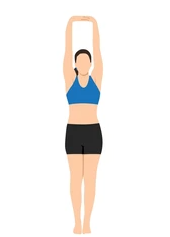
- Warrior I (Virabhadrasana I):
- From Mountain Pose, step your right foot back about 3-4 feet and angle it slightly outward.
- Bend your left knee, keeping it directly over your ankle, as you square your hips forward.
- Reach your arms overhead, palms facing each other, and gaze forward.
- Feel strong and grounded through your feet as you lift through your chest
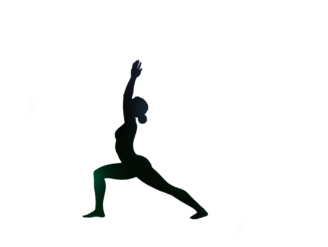
- Tree Pose (Vrksasana):
- Start in Mountain Pose and shift your weight onto your left foot.
- Lift your right foot and place the sole against your inner left thigh or calf, avoiding the knee.
- Press your foot into your thigh or calf and engage your core for balance.
- Bring your palms together at your heart center or extend your arms overhead like branches.
- Find a focal point to help with balance.

- Downward-Facing Dog (Adho Mukha Svanasana):
- Begin on your hands and knees with your wrists under your shoulders and your knees under your hips.
- Lift your hips up and back, straightening your arms and legs to form an inverted V shape.
- Press your hands firmly into the mat and lengthen your spine.
- Ground down through your palms and the soles of your feet, creating a strong connection with the earth.
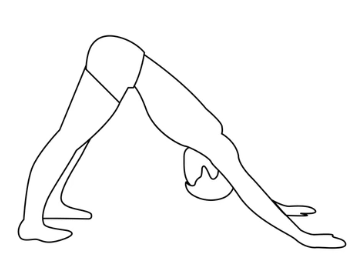
- Bridge Pose (Setu Bandhasana):
- Lie on your back with your knees bent and feet hip-width apart, heels close to your sitting bones.
- Press your feet into the mat as you lift your hips towards the ceiling.
- Interlace your fingers underneath you and roll your shoulders underneath you.
- Feel the strength and stability in your legs and the support of the earth beneath you.
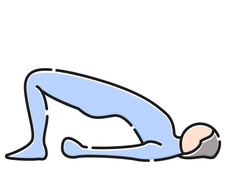
- Seated Forward Bend (Paschimottanasana):
- Sit on the floor with your legs extended straight in front of you.
- Inhale to lengthen your spine, then exhale to hinge at your hips and fold forward over your legs.
- Hold onto your shins, ankles, or feet, keeping your spine long and your neck relaxed.
- Ground down through your sitting bones and feel the connection with the earth.

- Squat Pose (Malasana):
- Stand with your feet wider than hip-width apart and toes turned slightly out.
- Squat down as low as comfortable, bringing your elbows inside your knees.
- Bring your palms together at your heart center and press your elbows into your knees.
- Feel grounded through your feet and connected to the earth’s energy.

- Child’s Pose (Balasana):
- Kneel on the floor with your big toes touching and knees apart.
- Sit back on your heels and then fold forward, extending your arms in front of you.
- Rest your forehead on the mat and relax your entire body.
- Surrender to the support of the earth beneath you.

- Corpse Pose (Savasana):
- Lie flat on your back with your arms by your sides and your legs extended.
- Close your eyes and allow your body to completely relax.
- Feel the earth supporting you and let go of any tension or stress.

- Happy Baby Pose (Ananda Balasana):
- Lie on your back and hug your knees into your chest.
- Grab the outer edges of your feet with your hands, flexing your feet towards the ceiling.
- Gently rock from side to side, massaging your lower back and hips.
- Feel a sense of ease and security as you connect with the earth’s energy.
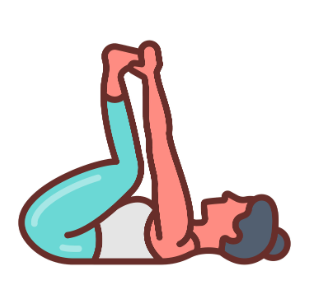
Practice these poses regularly to help activate and balance your Root Chakra, fostering feelings of stability, security, and grounding.
You will find more info about yoga poses in yoga section. Please go through it.
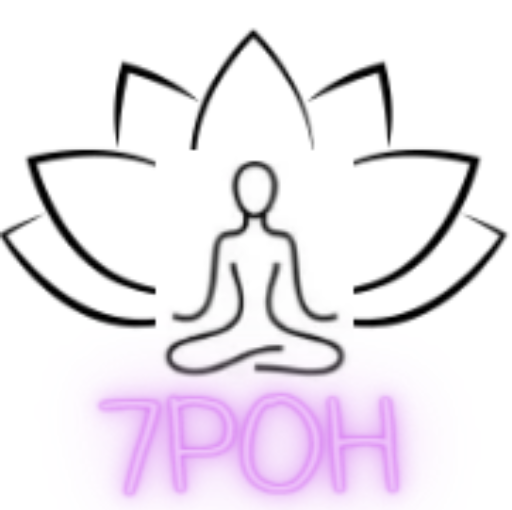

I do agree with all the ideas you have introduced on your post. They are very convincing and will definitely work. Still, the posts are very short for newbies. May just you please prolong them a little from subsequent time? Thank you for the post.
Yes We do agree on this, we will work on it. Thanks!